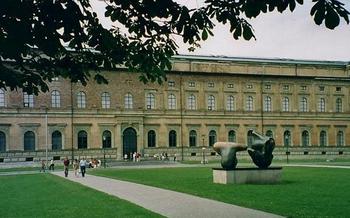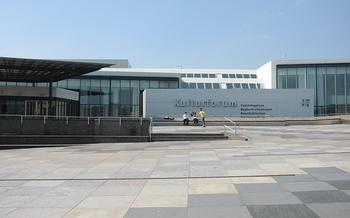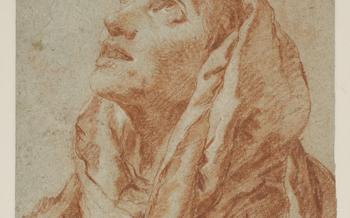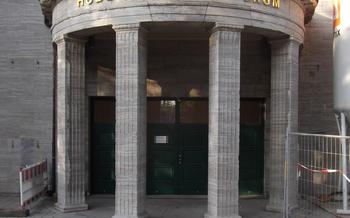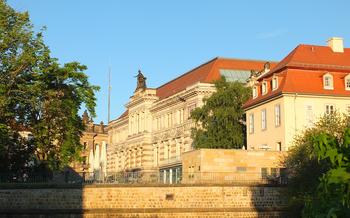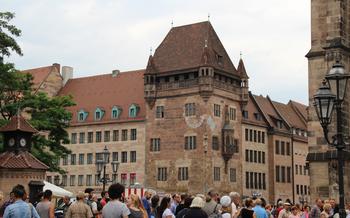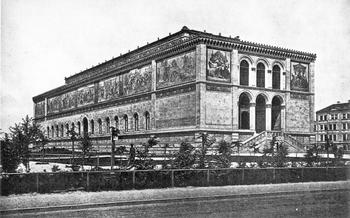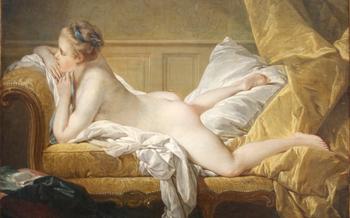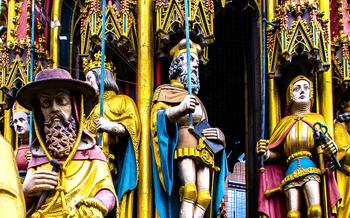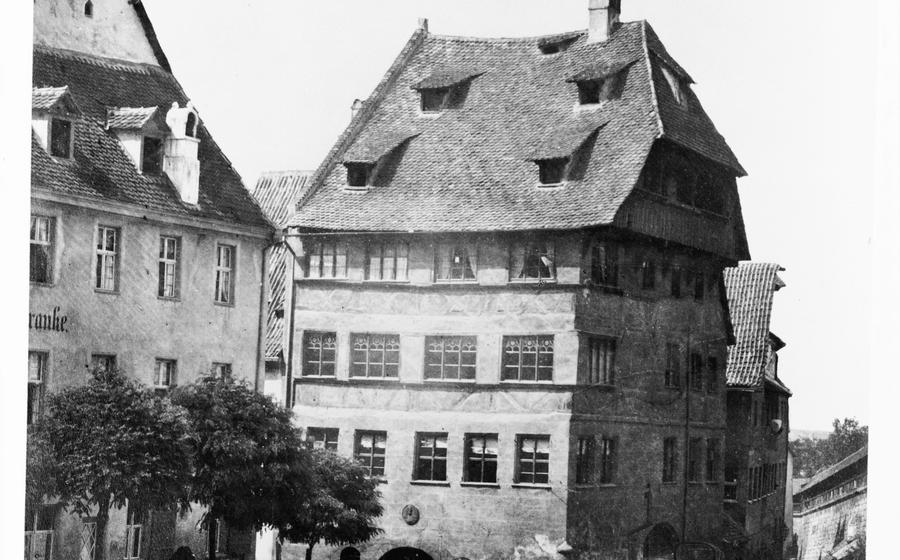
Albrecht Dürer's House (Albrecht Dürer Haus)
- Albrecht Dürer's House: A Historical Gem in Nuremberg
- Exploring the Facades: A Glimpse into the Past
- Stepping Inside: A Journey Through Dürer's Life
- Dürer's Studio: Where Creativity Blossomed
- Engravings and Woodcuts: Masterpieces of Precision
- Paintings and Drawings: Capturing the Essence of Life
- Self-Portraits: A Reflection of Identity
- Legacy and Influence: A Lasting Impact
- Guided Tours and Workshops: Immersive Experiences
- Museum Shop: A Treasure Trove for Art Enthusiasts
- Accessibility and Facilities for Visitors
- Nearby Attractions: Enhancing the Experience
- Events and Exhibitions: Dynamic Programming
- Photography and Social Media: Sharing the Experience
Albrecht Dürer's House: A Historical Gem in Nuremberg
In the heart of Nuremberg, a vibrant city steeped in history and culture, lies a hidden gem that art enthusiasts from around the world flock to: the Albrecht Dürer Haus. This remarkable museum, housed within the meticulously preserved home of the legendary German Renaissance artist Albrecht Dürer, offers a unique glimpse into the life and works of one of the most celebrated figures in the history of art.
Dürer's legacy extends far beyond the boundaries of his time. As a painter, printmaker, and theoretician, he revolutionized the art world with his groundbreaking techniques, meticulous attention to detail, and profound insights into human nature. His works, spanning from intricate engravings and woodcuts to captivating paintings and self-portraits, continue to captivate and inspire audiences to this day.
The Albrecht Dürer Haus stands as a testament to the artist's enduring influence. Step inside its walls, and you'll embark on a journey through Dürer's extraordinary life and artistic achievements, gaining a deeper appreciation for his genius and the indelible mark he left on the world of art.
Location and Accessibility:
The Albrecht Dürer Haus is conveniently located in the heart of Nuremberg's picturesque Old Town, a UNESCO World Heritage Site. Easily accessible by foot or public transportation, the museum invites visitors to immerse themselves in the rich cultural heritage of this enchanting city.
Exploring the Facades: A Glimpse into the Past
The Albrecht Dürer Haus stands as a testament to the enduring legacy of its former resident. The building's exterior is a captivating blend of Gothic and Renaissance architectural styles, reflecting the transition that took place during Dürer's lifetime. The intricate carvings and decorative elements on the facade hint at the artistic treasures that lie within.
Over the centuries, the building has undergone several renovations and restorations, each leaving its mark on its appearance. The most significant renovation took place in the 19th century when the house was transformed into a museum. During this renovation, great care was taken to preserve the building's original features while introducing modern elements to enhance its functionality as a museum.
As you gaze upon the facades, take a moment to notice the hidden details and symbolism that add layers of meaning to the structure. Look for the coat of arms of the Dürer family, a reminder of the artist's prominence and civic pride. Discover the carvings that depict scenes from Dürer's life and works, offering a glimpse into his artistic inspirations. These subtle touches provide a deeper understanding of the man and his times.
Stepping Inside: A Journey Through Dürer's Life
The Albrecht Dürer Haus is not just a museum; it's a journey through the life and work of one of the greatest artists of the Renaissance. The museum is divided into several sections, each showcasing a different aspect of Dürer's life and career.
In the first section, you'll learn about Dürer's early life and training. You'll see examples of his early work, including drawings, woodcuts, and engravings. You'll also learn about his time as an apprentice in the workshop of Michael Wolgemut, one of the leading artists of the time.
The second section focuses on Dürer's travels. Dürer traveled extensively throughout Europe, and his travels had a profound impact on his work. You'll see examples of his work from his time in Italy, where he was inspired by the Italian Renaissance. You'll also see work from his time in the Netherlands, where he was influenced by the work of the Flemish masters.
The third section of the museum focuses on Dürer's later years. In his later years, Dürer became increasingly interested in religion and philosophy. You'll see examples of his work from this period, including his famous painting "The Four Horsemen of the Apocalypse."
The Albrecht Dürer Haus is a must-see for anyone interested in art history. The museum offers a fascinating glimpse into the life and work of one of the most important artists of the Renaissance.
Dürer's Studio: Where Creativity Blossomed
In the heart of the Albrecht Dürer Haus, visitors are transported to the artist's personal workspace, where his creative genius flourished. Dürer's studio was more than just a place of work; it was a sanctuary where he poured his soul into his art, surrounded by the tools and materials that brought his vision to life.
The studio has been meticulously preserved, offering a glimpse into Dürer's daily routine and artistic process. Visitors can marvel at the artist's workbench, where he painstakingly created his engravings and woodcuts. The collection of tools, including chisels, gouges, and burins, provides insight into the intricate techniques he mastered.
Personal touches, such as Dürer's writing desk and chair, add a layer of intimacy to the space. Imagine the artist sitting at his desk, sketching out ideas or writing letters to his contemporaries. The studio also features a collection of Dürer's personal belongings, including clothing and household items, offering a glimpse into his domestic life.
Step into Dürer's studio, and you'll feel the presence of a creative spirit that continues to inspire artists and art enthusiasts worldwide. It's a space that invites you to contemplate the workings of a master and the passion that fueled his extraordinary talent.
Engravings and Woodcuts: Masterpieces of Precision
Albrecht Dürer's mastery of engraving and woodcut printmaking techniques elevated him to the ranks of the greatest printmakers in history. His intricate engravings, such as the famous "Knight, Death, and the Devil," showcased his exceptional skill in capturing minute details and conveying complex narratives on a small scale. Dürer's woodcuts, like the iconic "Apocalypse" series, demonstrated his ability to create bold and expressive images with simple black lines.
Visitors to the Albrecht Dürer Haus can marvel at a collection of the artist's finest engravings and woodcuts, including some of his most renowned works. These artworks offer a glimpse into Dürer's creative process and his fascination with precision and detail. His technical virtuosity and artistic vision combined to produce prints that continue to captivate and inspire viewers centuries later.
Paintings and Drawings: Capturing the Essence of Life
Albrecht Dürer's paintings and drawings, showcased in the museum, reveal the depth and versatility of his artistic talent. His mastery of oil painting allowed him to create realistic and detailed portraits, capturing the essence and personality of his subjects. One of the most famous paintings on display is "Self-Portrait at Twenty-Eight", which offers a glimpse into Dürer's own introspective nature.
Moving beyond portraits, Dürer also excelled in landscape painting, capturing the beauty of the natural world with precision and sensitivity. His famous watercolor series, "Watercolors of the Alps," depicts the majestic peaks and valleys of the Alpine region, showcasing his exceptional skills in capturing light, shadow, and atmospheric conditions.
Dürer's drawings, executed in pen and ink or charcoal, demonstrate his extraordinary skills in line and form. His attention to detail and his ability to convey emotions and expressions through simple lines are evident in works like "Praying Hands" and "The Hare." These drawings reveal the artist's deep understanding of human anatomy and his ability to imbue even the smallest details with profound meaning.
Self-Portraits: A Reflection of Identity
Albrecht Dürer's self-portraits offer a unique window into the artist's personality and self-perception. Throughout his career, Dürer created numerous self-portraits, each capturing a different stage of his life and artistic development. His early self-portraits, such as the one from 1498, reveal a confident and ambitious young man, eager to establish his reputation as an artist. In contrast, his later self-portraits, such as the one from 1526, depict a more mature and contemplative individual, deeply engaged with the complexities of his own identity.
Dürer's self-portraits are not merely exercises in self-representation; they are also profound explorations of the nature of human existence. Through his self-portraits, Dürer sought to understand himself better, to capture the essence of his own being. He experimented with different poses, expressions, and techniques, constantly striving to create a truthful and authentic representation of himself.
Dürer's self-portraits have had a profound impact on the history of art. They have served as inspiration for countless other artists, including Rembrandt, Van Gogh, and Picasso, who have all created their own self-portraits in homage to Dürer. Dürer's self-portraits stand as a testament to his enduring legacy as an artist and his profound influence on the development of Western art.
Legacy and Influence: A Lasting Impact
Albrecht Dürer's contributions to the development of German Renaissance art were profound and far-reaching. His innovative techniques and mastery of various artistic media, including engraving, woodcut printmaking, painting, and drawing, set new standards for artistic expression. Dürer's attention to detail, realism, and emotional depth in his artworks earned him widespread recognition and admiration during his lifetime.
His influence extended beyond the borders of Germany, inspiring subsequent generations of artists across Europe. His engravings, in particular, had a significant impact on the development of the printmaking tradition. Artists such as Lucas Cranach the Elder, Hans Holbein the Younger, and Pieter Bruegel the Elder were among those who drew inspiration from Dürer's innovative techniques and artistic vision.
Dürer's legacy extends to the present day, where his artworks continue to be celebrated and studied for their technical brilliance and emotional resonance. His contributions to the world of art have earned him a place among the most influential and revered artists of all time. His works are showcased in prestigious museums worldwide, attracting millions of visitors each year who come to witness the enduring power of his artistic genius.
Guided Tours and Workshops: Immersive Experiences
To enhance your visit to Albrecht Dürer's House, consider joining a guided tour. Knowledgeable guides will take you on a journey through Dürer's life and work, providing insights and anecdotes that bring the museum's exhibits to life. Tours are available in various languages, including English, German, French, and Spanish, ensuring accessibility for visitors from around the world.
The museum also offers a range of workshops and educational programs that allow you to delve deeper into Dürer's techniques and artistic practices. These workshops are led by experienced instructors who guide participants through hands-on activities such as printmaking, drawing, and painting. Whether you're a beginner or an experienced artist, these workshops provide a unique opportunity to learn from Dürer's legacy and create your own artworks inspired by his style.
To ensure a spot in a guided tour or workshop, it's advisable to book in advance, especially during peak tourist season. Check the museum's website or contact them directly for more information on availability, schedules, and fees.
Museum Shop: A Treasure Trove for Art Enthusiasts
The Albrecht Dürer Haus museum offers a well-stocked shop that caters to art enthusiasts and souvenir seekers alike. Here, visitors can find a treasure trove of Dürer-inspired merchandise and memorabilia to take home as a lasting memento of their visit.
From high-quality reproductions of Dürer's famous engravings and woodcuts to intricate replicas of his self-portraits, the shop offers a wide range of artwork for collectors and admirers. Visitors can also browse through a diverse selection of books, catalogs, and postcards featuring Dürer's life and works, providing an opportunity to delve deeper into his artistic legacy.
For those seeking unique souvenirs, the shop offers a variety of creative gifts, including T-shirts, mugs, and stationery adorned with Dürer's iconic imagery. These items make for excellent presents for friends, family, or fellow art enthusiasts.
The museum shop is conveniently located within the museum building, making it easy for visitors to browse and purchase items before or after their tour. Its friendly and knowledgeable staff is always ready to assist with any questions or recommendations, ensuring that visitors find the perfect souvenirs to commemorate their visit to the Albrecht Dürer Haus.
Accessibility and Facilities for Visitors
The Albrecht Dürer Haus is committed to providing an inclusive and accessible experience for all visitors. The museum features several accessibility features to ensure that everyone can enjoy the exhibits and learn about Dürer's life and work.
Wheelchair users and visitors with limited mobility can easily navigate the museum's ground floor, which houses the main exhibition spaces. Ramps and elevators are available to access the upper floors, allowing visitors to explore the entire museum without barriers.
Restrooms designed for disabled visitors are conveniently located on each floor, ensuring easy access and comfort. Cloakrooms are also available for visitors to store their belongings during their visit.
To enhance the museum experience for visitors who are deaf or hard of hearing, audio guides are available in multiple languages. These guides provide detailed descriptions of the exhibits and Dürer's artwork, allowing visitors to learn at their own pace.
Multilingual brochures are also available at the museum's information desk, providing visitors with additional information and context about the exhibits. The museum staff is friendly and knowledgeable, always ready to assist visitors with any questions or requests.
Nearby Attractions: Enhancing the Experience
Nuremberg offers a wealth of other cultural and historical attractions that complement a visit to the Albrecht Dürer Haus. The Germanisches Nationalmuseum is a must-see for anyone interested in German history and culture, housing a vast collection of artifacts from prehistoric times to the present day. The Nuremberg Castle, perched on a hill overlooking the city, offers stunning views and insights into the city's medieval past.
For those fascinated by art, the Nuremberg Kunsthalle showcases contemporary and modern art exhibitions, while the Neues Museum focuses on international contemporary art. The Toy Museum is a delight for visitors of all ages, showcasing a vast collection of toys from around the world, while the DB Museum offers a journey through the history of German railways.
To delve deeper into Nuremberg's rich history, visitors can explore the Old Town, with its well-preserved medieval streets, squares, and fortifications. The Hauptmarkt, the city's main square, is home to the Frauenkirche, a Gothic masterpiece, and the Schöner Brunnen, a beautiful fountain adorned with intricate sculptures.
By combining a visit to the Albrecht Dürer Haus with these other attractions, visitors can create a comprehensive and memorable itinerary that captures the essence of Nuremberg's rich cultural heritage.
Events and Exhibitions: Dynamic Programming
The Albrecht Dürer Haus is not just a static museum; it hosts a variety of temporary exhibitions and special events throughout the year, adding a dynamic element to the visitor experience. These exhibitions often focus on specific aspects of Dürer's work or explore the broader context of the German Renaissance. Visitors can also attend lectures, workshops, and demonstrations by contemporary artists and scholars, providing an opportunity to engage with the museum's collection in new and exciting ways.
To stay updated on upcoming programs and activities, be sure to check the museum's website or follow their social media channels. The museum's website also offers a calendar of events, allowing visitors to plan their visit accordingly. Whether you're interested in delving deeper into Dürer's artistic techniques or discovering the latest trends in contemporary art, the Albrecht Dürer Haus offers something for everyone.
Photography and Social Media: Sharing the Experience
The Albrecht Dürer Haus welcomes visitors to capture the beauty of the museum's collection through photography. While admiring Dürer's masterpieces, feel free to take photos to document your visit and share your experience with the world. To ensure the best results, consider the lighting and angles to showcase the artwork's intricate details.
For social media enthusiasts, the museum encourages you to share your photos and experiences using relevant hashtags. By doing so, you become part of a vibrant online community of art enthusiasts who appreciate and celebrate Dürer's legacy. Tagging the museum (@AlbrechtDurerHaus) in your posts will allow us to connect with you and discover your unique perspectives.
